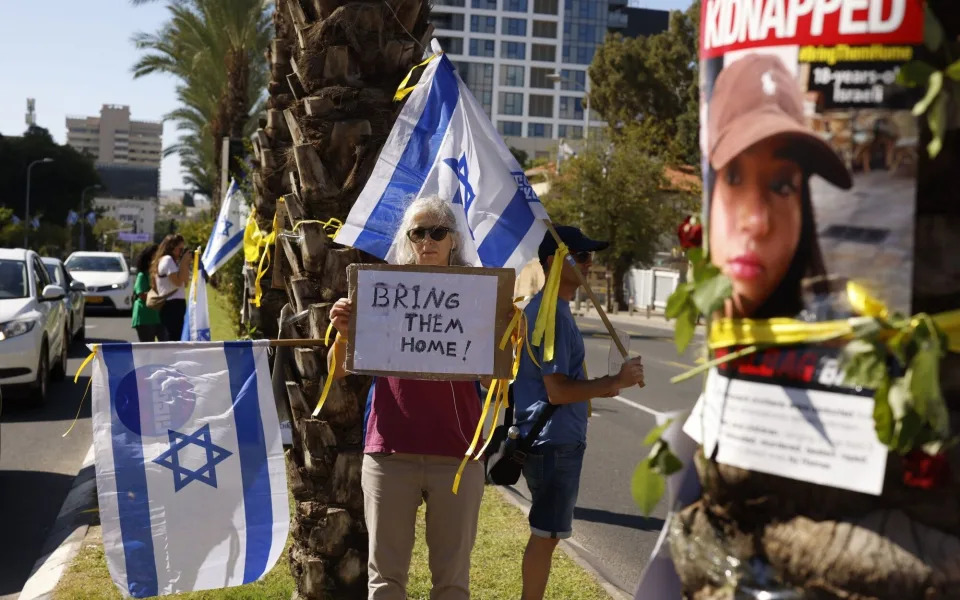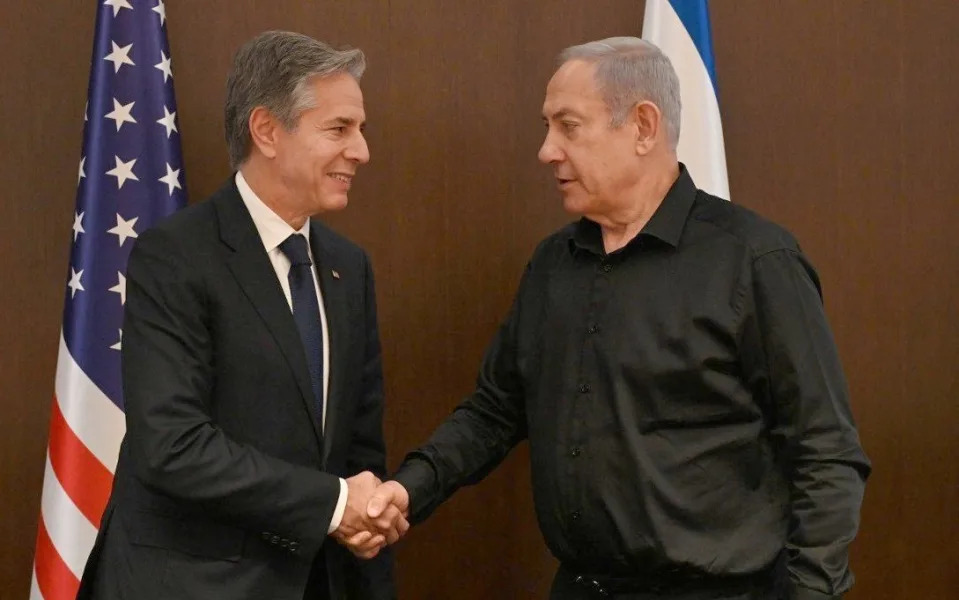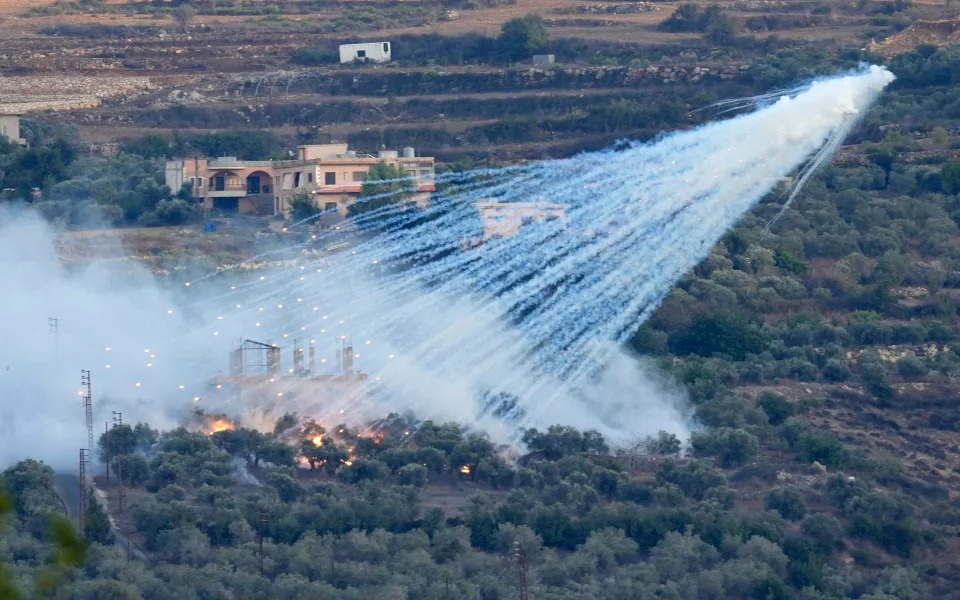
Израильские войска, изображенные вдоль границы с сектором Газа, все еще ждут приказа о вторжении – Ганнибал Ханске/EPA-EFE/Shutterstock
telegraph.co.uk: On the 11th day of the Israel-Gaza war, the campaign appears to be in limbo.
Israel long ago reasserted control of its territory on the Gaza border. Its air force has subjected the occupied territory to more than a week of relentless bombardment. And 300,000 reservists backed by tanks and helicopters are massed for a ground invasion.
Yet the order to start never comes – and officially, the Israel Defence Forces (IDF) will not explain why.
On Tuesday Lt Col Richard Hecht, a spokesman for the IDF, told reporters that plans for the operation were still being drawn up.
“I’m not going to comment on our future plans,” he said.
He said this operation “is something different”, adding: “We have to break off from the old Gaza tit-for-tat. It’s going to look different, it is going to take longer, and it’s going to look totally different.
“These plans are being developed, they’ll be decided by and presented to our political leadership.”
In reality, the delay reflects complex calculations about hostages, pressure from allies to avoid civilian casualties, and the threat of intervention by Hezbollah.
Hostages
Hamas is believed to be holding 199 hostages captured during its bloody raid into southern Israel on Oct 7.
Ask an Israeli spokesman on the record about negotiations to free them, and you will be told that it is impossible to negotiate with Hamas after last weekend’s massacres.
In reality, their fate is a major moral and political consideration.
They include a number of male and female soldiers, but many – perhaps most of them – are civilians.
They include women, children, and elderly people, some of whom suffer from chronic health conditions.
Everyone knows that few if any hostages would be likely to survive a ground offensive.
Hamas claims 22 of them have already been killed by Israeli airstrikes. The claim is impossible to immediately confirm. Lt Col Hecht dismissed the report as “Hamas psy-ops”.
In the stunned aftermath of the Oct 7 massacres, many Israelis in private conversations suggested that was a sacrifice that would have to be made – part of the grim price for securing the country from Hamas once and for all.
But many others, already furious with the government and security establishment for failing to protect them, are in no mood to see more women and children die.
On Saturday, the families of several hostages gathered outside the IDF headquarters in Tel Aviv to demand their loved ones be brought home alive – and as soon as possible.
They have no intention of allowing the government to sacrifice their children, parents and siblings in the name of military necessity.
So it seems some kind of talks are going on.
On Monday, The Times of Israel reported that the hostages were at the top of the agenda for Antony Blinken, the United States secretary of state, during his whirlwind tour of regional capitals this week.
And Qatar has publicly said it is hoping to broker the release of at least the women and children.
Hamas is clearly keen to keep the hostage issue alive. It released a proof-of-life video of Maya Shem, 21, who was kidnapped from the Nova music festival, on Monday night, and demanded Israel release 6,000 prisoners in exchange for the hostages’ safe return.
Some will say that plays into the terrorists’ hands. But despite what the hardliners say, Israel’s government needs to give talks a chance.
Pressure
The other consideration is political and diplomatic.
Israel’s traditional allies, including the US and Britain, have been unequivocal in backing its right to defend itself.
But that support is not unqualified. As James Cleverly, the Foreign Secretary, said last week, Israel’s allies also expect the IDF to show a degree of “restraint”.
Western governments – and cooler heads in the Israeli war cabinet – must be aware that a humanitarian catastrophe in Gaza will only reinforce the cycle of violence and thirst for revenge that Hamas recruitment relies on.
It would also stoke public anger in Israel’s Arab neighbours, sabotaging efforts to normalise relations. It could also inflame a regional war.
Western public opinion is also likely to turn against Israel if it is seen to subject the Gaza Strip to massive collective punishment.
The full-scale siege of Gaza, cutting off water, electricity and fuel supplies, and a furious bombing campaign that has killed nearly 3,000 people, already risks squandering public sympathy.
A ground invasion is likely to be infinitely more violent.
That is why Mr Blinken is exerting enormous efforts to persuade Israel and Egypt to reach agreement on opening a corridor for civilians to leave and aid to be delivered.
It may also explain why Israel has indefinitely extended its deadline for civilians in the northern half of the Gaza Strip to move south of the Wadi Gaza river.
The original deadline of 24 hours was clearly unworkable – as international aid agencies made clear.
There is a bigger political risk here too – the exit strategy.
It is not at all clear that Israel has a clear vision about what to do afterwards if it achieves its aim of destroying Hamas.
Some hardliners back an open-ended occupation and a return of the settlements withdrawn in 2005.
Others would like to withdraw and install a more pliable successor government to Hamas.
Both options are fraught with political, moral, and military risk. Israel’s British and American allies will be begging Benjamin Netanyahu, the Israeli prime minister, and his war cabinet not to repeat their mistakes from the war on terror.
Military
The bottom line is that a full-scale invasion of Gaza designed not only to free the hostages but “demolish” Hamas is incredibly difficult.
Hamas is believed to have spent more than a year planning its incredibly bloody attacks. There is no way they failed to game out a forceful Israeli response and prepare for it.
Gaza city is a dense urban environment – what soldiers call a “360 degree” battle space.
Hamas will be defending terrain it knows intimately well and Israel’s advantages in armour will be significantly diminished.
Sniper teams, IEDs (improvised explosive devices), and prepared kill zones will all be lying in wait for the advancing Israelis.
Israeli officials have made clear the operation will be lengthy – and costly. If successful, it could end up looking like Russia’s destruction of Grozny in the 2000s.
There is a wider military consideration too.
Hezbollah, the powerful Iranian-backed militia based in Lebanon, has indicated it may enter the war if a ground assault on Gaza goes ahead.
Exchanges of fire on Israel’s northern border are already intensifying.
Lt Col Hecht insisted that Israel is capable of and ready to fight a two-front war.
Diplomatic channels have been used to warn the Lebanese government of a catastrophic response if Hezbollah decides to go all in. Two US aircraft carriers have been moved to the region to back up that threat.
But the reality is that it would be an extremely difficult proposition.
Most of Israel’s 300,000 reservists and the bulk of its tanks appear to be massed around Gaza. Hezbollah’s supposedly immense arsenal of rockets could cause massive damage to northern Israel.
So Israeli generals will be working out how to contain the northern threat while going ahead with the Gaza operation – and it is not clear how to do so.
















Leave a review